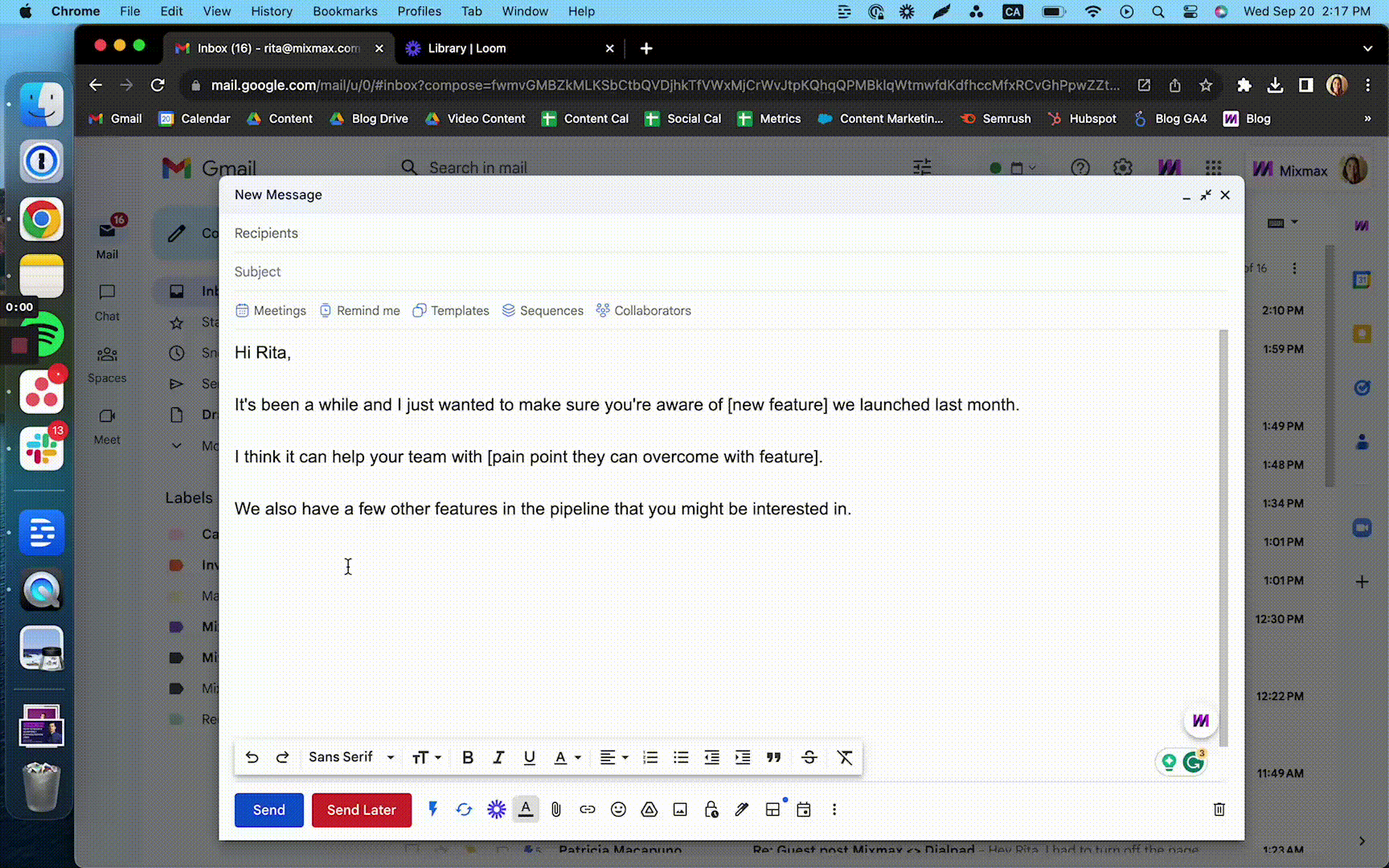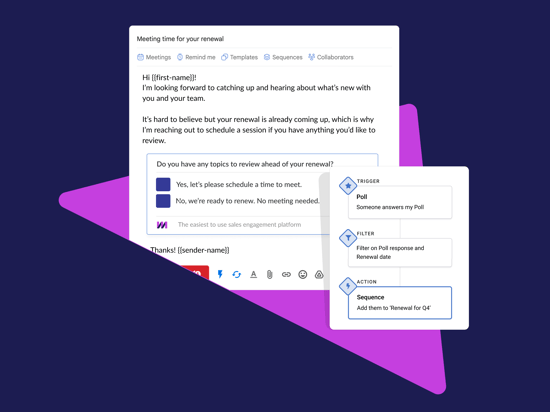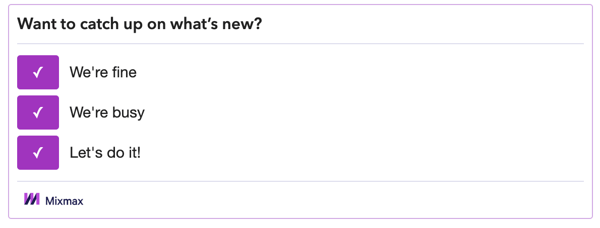A quarterly business review (QBR) might not be the most glamorous part of the job. But it’s definitely one of the most essential.
Every three months (if you’re lucky enough to snag a QBR meeting that often), it's time to sync up, see how things are rolling, and adjust any plans as needed.
It's all about making sure your product is working for your clients as planned, understanding where you've been shining, and identifying areas for growth.
And while QBRs are essentially 'business' talks, they're also so much more. They're moments of trust, understanding, and mutual growth.
So whether you're new to the QBR game or looking for ways to step it up a notch, this guide has your back. Read on and discover how to make your QBRs not just successful, but impactful for you and your clients.
| |
What is a quarterly business review (QBR)?
A quarterly business review is like a routine doctor's check-up, but for your business relationship.
It’s a dedicated time every three months (again, hopefully that often) where you touch base, gauge the health of your partnership, and make sure your product is helping them achieve the goals you had agreed upon together.
But beyond reviewing performance metrics and charts, it's also a chance for you to solidify trust, realign goals, and refresh commitments with your customers.
And it's not just about looking back—it’s also about looking forward, outlining the course for the coming months.
What are the benefits of a QBR?
We interviewed Mixmax’s own Head of Customer Success, Elliott Kohtz, on what the goals and benefits are of a successful QBR meeting.
Engaging stakeholders for a QBR meeting
Tone down formality
- Frame the email as if speaking to someone at a restaurant or a friend.
- Mention how the QBR could genuinely help them.
Avoid overwhelming customers
- Be careful with the frequency and content of outreach.
- Ensure outreach provides value to avoid teaching customers to ignore communications.
Asking the tough questions
Status of partnership
- Always inquire about the health and state of the partnership.
- Assess the possibility of renewal in the current climate.
Open dialogue
- Encourage open, honest conversations about all aspects of the partnership.
- Address both positive and negative feedback.
- Ensure customers feel valued, reminding them that CSMs work for their benefit.
Using tech for efficient communication
One-click Polls with Mixmax
- Provides customers with an efficient way to give feedback or show their availability.
- One-click poll options may include: "Too busy to meet", "Nothing to discuss", or "Happy to book a meeting."
Benefits of polls
- Offer a quicker alternative to writing out emails, especially if the news isn't positive.
- Allow CSMs to get some form of feedback or signal, even if it's just an indication of the customer's current status.
 Mixmax Polls
Mixmax Polls
Remember, these tips showcase the importance of simplifying the QBR booking process, having genuine conversations, and leveraging tools like Mixmax to make communication seamless and efficient.
The key components of an effective QBR
Set the agenda
Setting an agenda before your quarterly business review will help you keep on track without leaving out key talking points.
Below is an example of a QBR agenda outline you—and your customer success team—can use.
1. Recap of last quarter
Objective: Understand what has transpired since the last QBR.
a. Achievements and milestones
- Highlights from the past quarter.
- Major wins and successful collaborations.
b. Challenges faced
- Discussion of issues or roadblocks.
- Solutions and mitigations applied.
2. Performance analysis
Objective: Gauge the effectiveness of ongoing efforts and collaboration.
a. Review Key Performance Indicators (KPIs)
- Review metrics and progress towards goals.
- Analysis of successes and areas of improvement.
b. Collect customer feedback and insights
- Sharing of customer testimonials, complaints, or suggestions.
- Discussion on customer satisfaction and areas of concern.
c. Net promoter score (NPS) survey
- Run an NPS survey to determine whether the customer will likely recommend your product/service to others (scale of 1-10).
3. Goal setting for the upcoming quarter
Objective: Align on objectives and expectations.
a. Review of previous goals
- Were they met, exceeded, or not achieved?
- Learnings from pursuing these objectives.
b. Setting new goals
- Brainstorming and alignment on new targets.
- Consider both company and customer aspirations.
4. Product/service updates
Objective: Keep the customer informed about new developments.
a. Recent updates
- Overview of any product/service changes or updates.
- Benefits these bring to the customer.
b. Upcoming features or offerings
- A sneak peek into what's in the pipeline.
- Discussion on how these can further benefit the customer.
5. Open discussion & feedback
Objective: Foster an open dialogue.
a. Customer's floor
- Let customer share their general feedback, concerns, or suggestions.
- Have an open discussion about the relationship's future.
b. Shared initiatives & opportunities
- Explore potential areas of further collaboration.
- Discuss upselling, cross-selling, or referral opportunities.
6. Action items & next steps
Objective: Ensure clarity on what needs to be done post-meeting.
a. Review action items
- List tasks, responsibilities, and deadlines.
- Clarify any ambiguous points.
b. Set the date for the next QBR
- Decide on a tentative date for the next review.
- Decide on any additional follow-up meetings or touchpoints.
Do a performance analysis
Before moving forward, take a look back and really dig into what worked and what didn’t. This will help you map out a more accurate plan for the future.
- Highlight the wins, and (more importantly) what led to them.
- Don’t sweep the crappy outcomes under the rug. Address them head-on.
- Use data visualization. A good graph can sometimes tell a story better than a thousand words.
Set SMART goals for the upcoming quarter
This is when you talk about what you want to crush in the next few months.
- Jot down goals that are ambitious but achievable. Use the SMART (Specific, Measurable, Achievable, Relevant, Time-bound) goal framework for this.
- Engage in a two-way street. Listen to your customers' goals and see how they align with yours.
Be prepared for QBR questions
Your customer might have a list of hard questions to ask you, especially if your product did not help them meet their goals last quarter.
You don’t want to be caught with your pants down during the QBR meeting.
Here’s some information you should keep handy:
- Number of licenses/seats
- Which team(s) use your product
- What tier/plan they’re on
- Total annual (or monthly) billing
- Signing & renewal dates
- Implementation date
- Main goals
- Key Performance Indicators (KPIs)
Detect early warning signs of churn
As you're diving into the data and feedback, you should also keep an eye out for warning signs that might indicate potential customer churn:
- Decreasing product usage or engagement.
- Increase in customer complaints or support tickets.
- Decline in customer participation during QBRs or other meetings.
- Frequent changes in the customer's point of contact.
- Any negative feedback or hesitance during goal-setting discussions.
- Low NPS score.
Recognizing these signs early on will allow you to address potential issues proactively, hopefully averting a larger crisis.
| Related post: Reduce Churn With Customer Success and Sales Collaboration |
Leveraging a quarterly business review template
If you’re a customer success manager, one of the best things you can do for your team is to have a quarterly business review template that everyone can use.
If you’re using Mixmax’s sales engagement platform, creating QBR templates and booking meetings becomes easy (and automated).
Mixmax lets you:
- Create QBR templates directly in the app and include them in a sequence.
- Add in-email polls and surveys that make it easy to gather feedback and gauge intent to renew.
- Add your calendar availability directly in the email, making it as easy as just clicking a button for your existing customers to book the QBR meeting with you (eliminating the dreaded back-and-forth scheduling dance).
 Learn how your customer success team can use Mixmax Polls to drive more renewals
Learn how your customer success team can use Mixmax Polls to drive more renewals
Fun fact: One of our very own customers, Insightly, was able to source nearly $1M in upsell pipeline per quarter thanks to Mixmax: “With Mixmax, we went from sourcing $100k in upsell pipeline per quarter to nearly $1 million per quarter. Within a couple of quarters, we’ll be sourcing over a million dollars of upsell pipeline for our sales team to pursue from the CS team,” said Senior Director of Customer Success, Luke Via.
Read the full Insightly case study here.
Examples of QBR email templates
QBR meeting invite example that adds value
"Hi [Name],
It's been a while and I just wanted to make sure you're aware of [new feature] we launched last month.
I think it can help your team with [pain point they can overcome with new feature].
We also have a few other cool features in the pipeline that you might find interesting.
 [Signature]"
[Signature]"
QBR meeting invite example that shares interesting data
"Hey [Name],
It's been a while! I was just looking at your team's [relevant stats/product usage data] and thought I'd share my findings.
I'd love to chat through to help drive more value for the next quarter.
We can also use this review to:
- Valuable topic 1
- Valuable topic 2
- Valuable topic 3

[Signature]"
Conclusion
As we wrap up our dive into nailing the QBR, it's obvious just how important these reviews are in nurturing customer relationships and steering growth.
Here are the main points to keep in mind:
- Purpose of a QBR: It's your routine touchpoint every three months (or so) to assess, align, and aspire for more with your customers.
- Benefits: From understanding your customer's perspective to fostering high-level engagements, QBRs are about more than just ticking boxes.
- Effective QBR components:
- Set a clear agenda.
- Analyze past performance and set clear goals.
- Use the QBR as an opportunity for both reflection and projection.
- The Mixmax advantage: For those using or considering Mixmax’s sales engagement platform, remember it's a game-changer for organizing and automating your QBR meetings.
Reflect on these key takeaways, implement them, and you'll not only be nailing your QBRs but also solidifying those customer relationships to avoid churn.
Frequent Asked Questions (FAQs)
What do you do if the QBR reveals significant discrepancies between the goals set and the outcomes achieved?
If a QBR reveals significant discrepancies between set goals and achieved outcomes, it's important to analyze the reasons behind these gaps and discuss adjustments or support needed to realign objectives with actual performance.
What are examples of how different industries tailor QBRs to their specific needs?
Different industries tailor QBRs to their specific needs by focusing on the metrics and outcomes that are most critical to their sector; for example, tech companies might emphasize product development and user feedback, while manufacturing firms might focus more on production efficiency and supply chain management.
What are the common pitfalls or mistakes to avoid during a QBR?
Common pitfalls to avoid during a QBR include overwhelming the client with too much data without clear insights, neglecting to address concerns or negative feedback directly, and failing to establish a concrete action plan with defined next steps and responsibilities.






